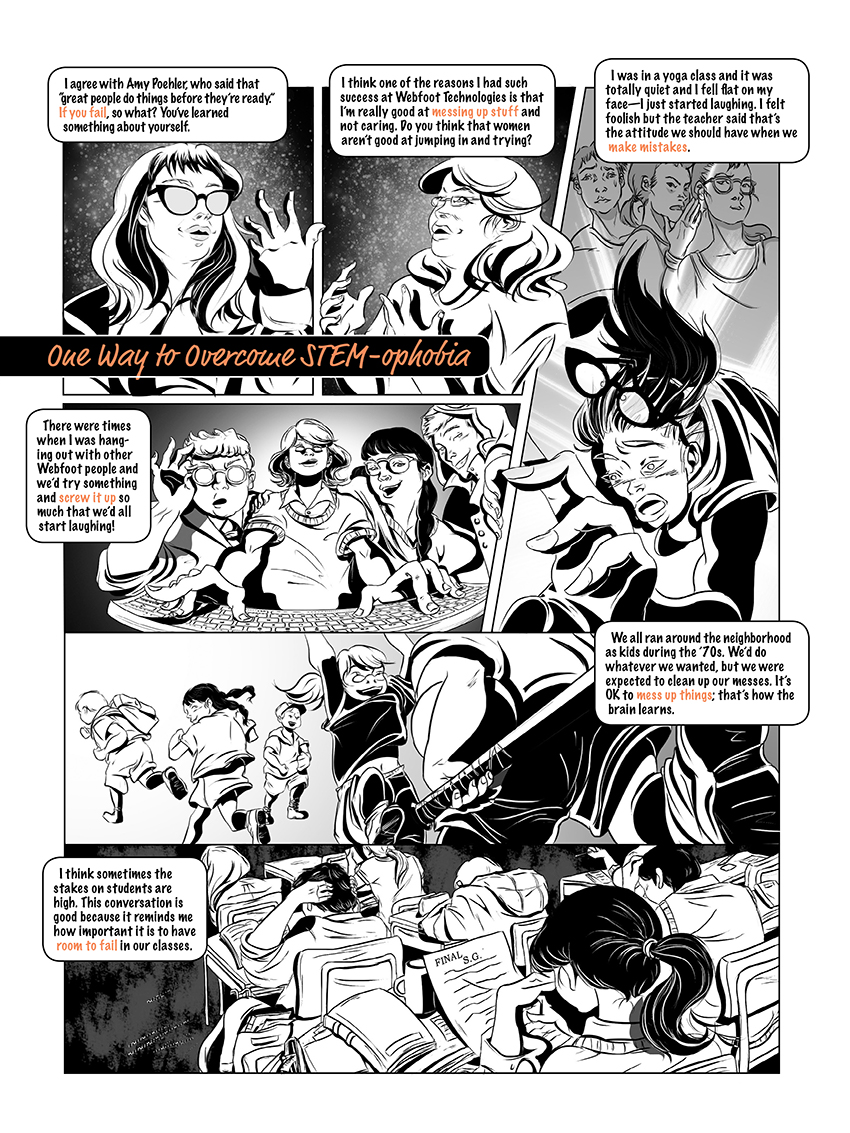
“I had saved up $2,000 in babysitting money to buy myself an Apple II Plus computer that I could use at home to program in assembly language, but my parents wouldn’t let me buy it because they thought it would be a passing phase,” says Dana Dominiak (M.S. CS ’92, Ph.D. ’01), recalling her early high school days in Lemont, Illinois.
If her parents only knew.
In 1993 Dominiak co-founded the personal computer and video games company Webfoot Technologies, Inc., of which she now serves as president, and would go on to provide computer consulting services to clients ranging from NASA to Argonne National Laboratory through her business Automate the World, Inc. Late last year she visited her alma mater and met Carly Kocurek, author, assistant professor of digital humanities and media studies, and director of Illinois Tech’s digital humanities program, to compare stories about their gamer experiences, to consider the state of gaming today, and to contemplate the gaming technology of what is to come.
“Ever since I’ve been into computers, I’ve always been the only woman in the room; I grew up that way and I’m very comfortable with it. I always joke that out of a class of 20, if there are five students who are women, that will seem weird to me,” says the affable and laid-back Dominiak, assistant professor in the Computer and Mathematical Sciences Department of Lewis University. “I’ve been very lucky because everyone has always been very respectful and nice to me. On the other hand, I did know not to go online. There were certain things that I knew not to do because I didn’t want to attract attention that was unwanted. But I was more interested in the technology instead of the social aspects.”

Kocurek, who was one of three finalists for Illinois Tech’s Nayar Prize I, is a cultural historian who specializes in the study of new media technologies and video gaming. She was addicted to her Atari 2600 and Game Boy consoles growing up, but turned to the social side of gaming as a graduate student, when she began to explore the intersections of gender, technology, and gaming. After conceptualizing and producing the internationally exhibited serious computer game Choice: Texas, which she created in 2014 to encourage dialogue about reproductive health care access issues, Kocurek and her controversial subject garnered attention that was not always welcome.
“I was so glad that I got only six hateful emails and 40 YouTube comments about how I was going to be murdered instead of thousands,” recalls Kocurek, the green streaks in her hair the same shade as her retro cat-eye eyeglass frames. She takes a pragmatic approach to her continued online gaming presence. “My options are to deal with being uncomfortable and deal with being harassed with some regularity or to stop doing what I’m doing. It’s a pretty real thing and happens at a lot of different levels. But there has been a lot of research done on gaming, and it’s not just gender-based harassment. The second you’re in a space that someone is not heavily moderating, there is risk. Some of it is the breakdown of accountability.”
Dominiak concurs. “I really do think that people being anonymous online is a huge problem. You could harass somebody or make death threats, and you’re right—there are literally no consequences. Could you imagine if life was like that?”

According to statistics published in spring 2016 by the Entertainment Software Association (ESA), playing computer and video games is part of normal life for 63 percent of households across the United States. And 31 percent of women age 18 or older represent the game-playing population, with boys age 18 or younger comprising 17 percent. Half of the top 10 selling video games (2015) received a Mature rating by the ESA and included Call of Duty, Grand Theft Auto V, and Mortal Kombat X, but the vast majority—89 percent—of games were rated for play by most everyone (including teens and children ages 10 or older). Smart phones and other mobile/wireless devices attracted 36 percent of the most frequent gamers, with 38 percent of them playing puzzle, board game, card game, and game show games, many comprising the casual game genre.
“We started making casual games before anyone seemed to notice that it was a legitimate genre,” says Dominiak, whose company has produced old-school time-passers such as mahjong, crosswords, and hangman for platforms ranging from Nintendo and Windows/Mac OSX to mobile phones, and recently released the latest version of the Hoyle Casino card game. “Now they’re dominating everything, in online stores and in regular retail, because people of different ages and backgrounds are playing, and not everyone likes to play the same game.”
More and more game players, however, are dipping their fingers into the realm of virtual reality, with 55 percent of the most frequent players already familiar with the concept and 58 percent intending to play games utilizing this latest technology.
“Instead of having a headset over your eyes the hardware is going to plug into your brain. It’s coming,” says Dominiak. “There are already scientists who are able to project images through the optic nerve and into the brain.”
Kocurek adds that she is interested in augmented reality, a technology that adds computer-generated sound, graphics, or video to a real-world environment to make for a more valuable user experience. Dominiak notes that such technology can have a disingenuous side, however. While VR incorporates the use of a headset, AR devices exist that mimic contact lenses.
“It’s Brave New World of ethics stuff, right?” says Kocurek.
“Yeah, we’re going to start merging with the machines, too. We’re not going to just be individuals; it’s going to be us and something else—and then we’re really not going to be human anymore,” Dominiak adds.
While society at large is far from the dystopian civilization of the Aldous Huxley futuristic classic, Dominiak, the computer scientist, finds compelling technical reasons why students, especially women, should overcome fears that may be holding them back from making much-needed contributions to the Digital Age.
“Artificial intelligence, computers, virtual reality—these things are taking over planet Earth, and I mean, literally. We need programmers now more than ever. If women don’t become developers or become involved in technology, they are putting themselves in peril,” cautions Dominiak. “They are not in charge of their own destiny if they don’t embrace technology and become a part of what is to come. Are we going to become a planet with robots that go around shooting the enemy? Or are we going to become a planet with robots that are benevolent and help each other? We should have a vote. But if we stay out of the field, we’re not going to have a vote.”
Kocurek, the historian, finds another reason, one that perhaps speaks to humankind on a deeper level. As part of the research she is doing on a book about Atari gaming pioneer Brenda Laurel, Kocurek had the chance to read Laurel’s laboratory notes and could almost share in the emotions Laurel and her team conveyed on the development of the novel form of entertainment.
“There was such a sense of opportunity and that they could provide something that was transformative, not just because it was such fun, but because it gave people a sense of wonder and awe in doing something new,” Kocurek explains. “I think there is something delicious about that.”